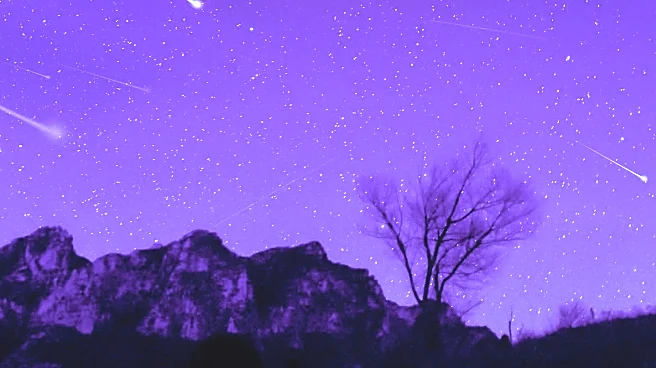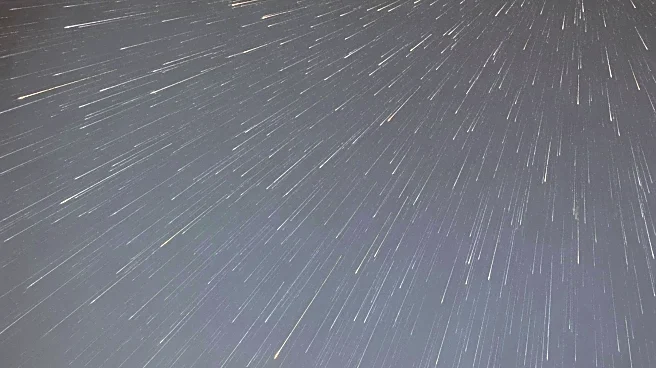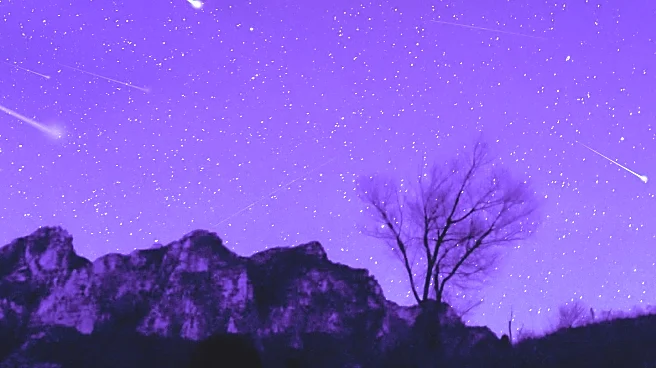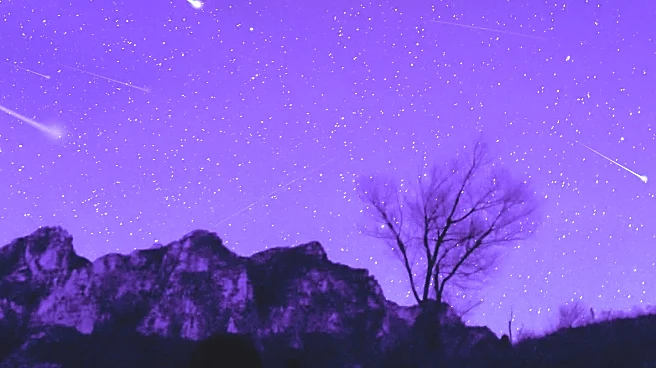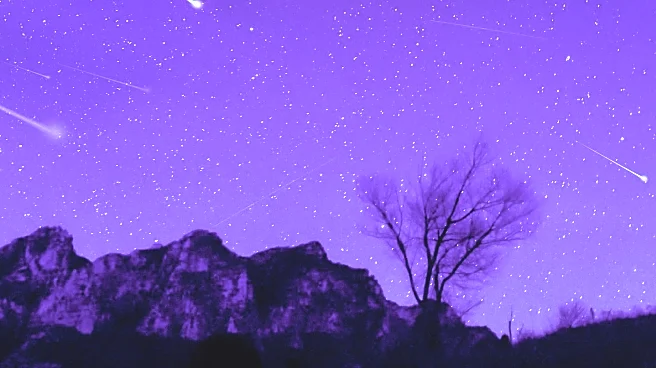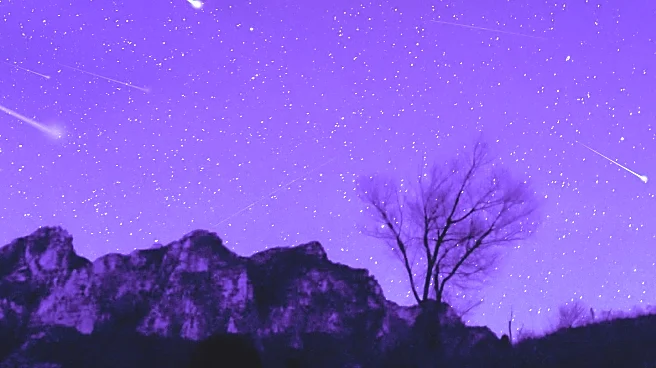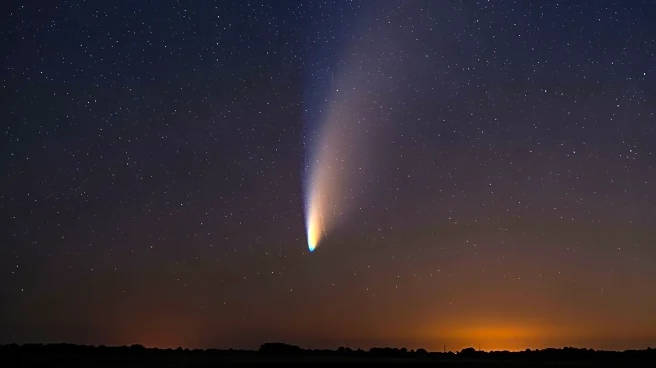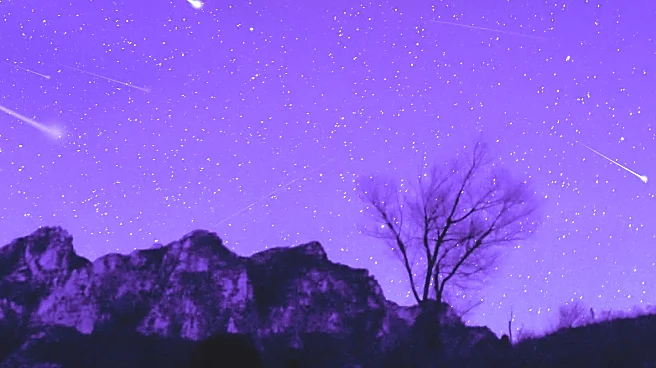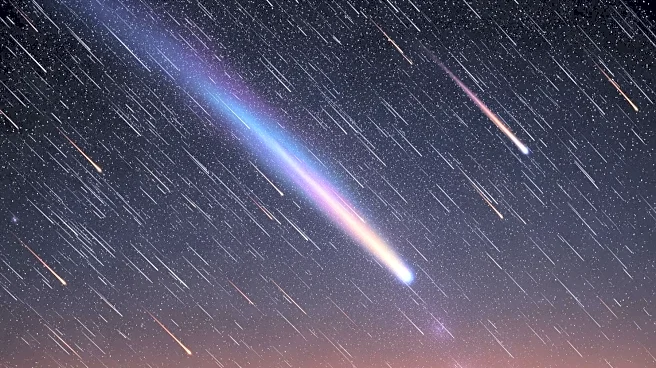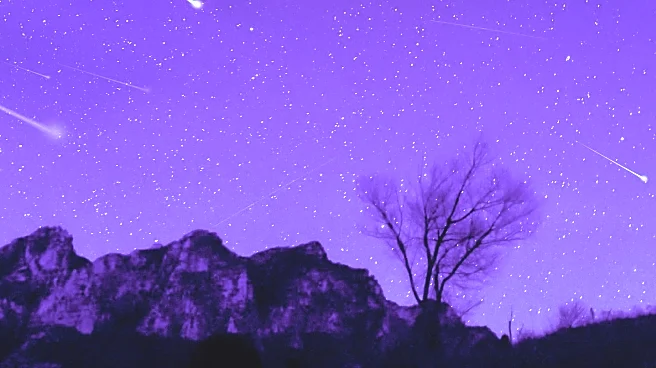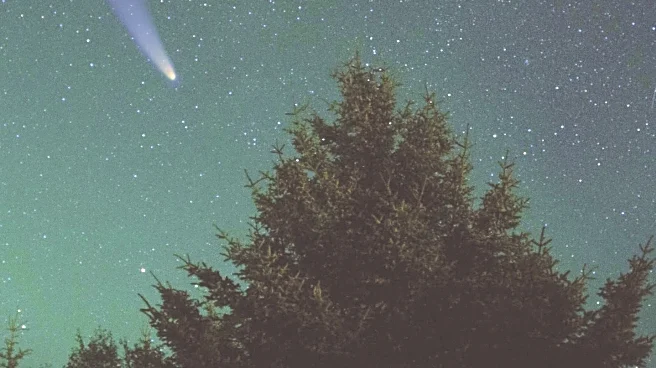What's Happening?
The Orionid meteor shower, an annual astronomical event, is set to peak in the early morning hours of Tuesday, October 21. According to Dave Eicher, Editor Emeritus of Astronomy magazine, the meteors appear
to originate from the constellation Orion the Hunter. Eicher encourages enthusiasts to observe the meteors between midnight and 4 a.m. during the peak activity. The Orionid meteor shower is known for its bright meteors, often referred to as shooting stars, and is expected to continue displaying observable activity for at least a week following the peak. This celestial event provides a unique opportunity for stargazers to witness the beauty of meteors streaking across the sky.
Why It's Important?
The Orionid meteor shower is significant for both amateur and professional astronomers as it offers a chance to study meteors originating from the debris of Halley's Comet. This event not only enriches scientific understanding of cometary debris and meteor showers but also engages the public in astronomy, fostering interest and education in the field. The visibility of the Orionids can vary based on weather conditions and light pollution, making it a sought-after event for those interested in celestial phenomena. The shower's occurrence in October also coincides with cooler weather, making it more comfortable for observers to spend extended periods outdoors.
What's Next?
Following the peak on October 21, the Orionid meteor shower will continue to be visible for at least a week, providing ample opportunity for observation. Stargazers and astronomers may plan viewing sessions during this period to maximize their chances of witnessing the meteors. Additionally, astronomy clubs and educational institutions might organize events or workshops to educate the public about meteor showers and their origins. The continued visibility of the Orionids offers a chance for further study and enjoyment of this natural spectacle.
Beyond the Headlines
The Orionid meteor shower not only captivates observers with its visual display but also serves as a reminder of the vastness and complexity of our universe. It highlights the interconnectedness of celestial bodies and the ongoing journey of comets like Halley's Comet through our solar system. This event can inspire discussions on the importance of preserving dark skies and reducing light pollution to ensure future generations can enjoy such astronomical phenomena.
